Dresdner Philharmonie shared a behind the scene look at the filming of TÁR with the orchestra. The film premieres in Germany today at Berlinale Palast followed by a release on March 2nd. You can read and watch new interviews below.
On other news, Knowing the Score will debut on ABC on March 21st.
Documentary Knowing the Score to debut on ABC (Australia)
Executive produced by Academy Award-winning actress, Cate Blanchett, Knowing The Score gets up close and personal with celebrated Australian conductor Simone Young, a woman who has broken many glass ceilings within the male dominated world of classical music.
This deeply personal doco captures Simone‘s triumphant return to Australia for her appointment as the first female Chief Conductor of the Sydney Symphony Orchestra in 2022.
Knowing The Score catches the build up to, and includes Simone‘s first performance at the reopening of the Sydney Opera House, emerging after two years from the shadow of COVID-19.
Cate Blanchett, Executive Producer says, “Simone Young is one of the world’s most significant and trailblaizing maestros and it is a great privilege to be a small part of this insightful documentary that celebrates her life, her work, and her triumphant return to Sydney.”
Knowing The Score will premiere on Tuesday, 21 March at 9pm on ABC TV and ABC iview.
Below is Google translated interview from German to English
Woman. Might. Music.
It’s a rainy January afternoon in London, the wind drives people through the streets with hissing umbrellas, while upstairs, on the first floor of a luxury hotel near the always somewhat sad Piccadilly Circus, Cate Blanchett’s stilettos sink into the carpet. Interviews for Tár, her new film in which she plays a conductor, dispatching journalists to Hollywood beat, tea, ginger shot, biscuits included. Blanchett rushing down the aisle now, alongside Nina Hoss, her wife in the film, whispering, laughing softly, she appears fragile and robust at the same time and totally normal in a super-professional way. Not a diva (which wouldn’t be a bad thing), but a star. It starts with the triumph of the heels over the said carpet floor, we will still be talking about shoes and feet here in general.
No sooner has the 53-year-old sat down in front of the journalist than the conductor’s name rattles on the table: Carlos Kleiber, the doubter tearing himself to pieces! Blanchett’s compatriot, Australian Simone Young, whom she knows personally! Nathalie Stutzmann, this summer’s Bayreuth debut! Antonia Brico, long forgotten! Valery Gergiev, because of his baton the size of a toothpick! She studied them all, all, all! And of course Leonard Bernstein , who has a significant role in Tár in that he is supposed to be the fictional mentor of the fictional American conductor Lydia Tár, whose case the film tells. The whole thing takes place today, in our post-pandemic present, and Bernstein is the one Classical superstar, on whose shoulders the young musician wanted to stand in order to escape the precarious, amused, wood-paneled narrowness of her origins.
At first glance, she seems to have succeeded all round. At 50, Lydia Tár is leader of a leading Berlin orchestra, has just written her autobiography (“Tár on Tár”) and is rehearsing for a recording of Gustav Mahler’s Fifth Symphony . Funny when, when it comes to the Adagietto, they loudly shout “Forget about Visconti!” to the musicians. Just don’t press your tear ducts, that means, just don’t sweat like the same music does in Visconti’s Death in Venice film adaptation! Funnily enough, Tár aims for her rendition of the Adagietto to take seven minutes, which is audacious, while Bernstein took almost twelve minutes. Away with the old heroes, bring on their glory? Is this really just about music?
“The music is what keeps Tár alive and reasonably sane,” says Blanchett. “It flows through them and transcends their everyday existence.” So Mahler only serves as a means, as a medium?
Perhaps Florian Hoffmeister’s camera will be the first to know the answers to this question. When Tár conducts, Hoffmeister likes to catch her from below, larger than life, with arms like tentacles and moves like ax blows. Or the camera meets her head-on, at eye level, in a way no orchestra or audience ever gets to see (conductors spend their lives with their backs to the world, which of course says something). In many shots, Tár is alone, with herself and her ghosts, alone with the music. Camera and director (Todd Field) make it clear early on that behind the proverbial façade of success she is the haunted, gnawed away by insecurities, fears and trauma. With colors exuding a hostile chill; with rooms that seem claustrophobic, from airplane lavatories to luxury apartments, without light and air; with pictures, constructing an immovably static, stony world. And with a horror that won’t be comprehensible for a long time.
If music is “movement,” as Bernstein puts it in a series of his legendary Young People’s Concerts that Lydia is watching on an old VHS cassette, then the music business, with its tallow sheen, is the most unmusical place on earth imaginable. Tár is also about that, about perverted passions and about how quickly one loses the beauty in life without noticing it.
“By the time she turns 50, Lydia realizes that the ‘higher, faster, further’ phase is over,” says Blanchett. “She’s a musician, she can’t constantly overtake herself. She has to give up everything that makes her successful in order to move on.” Apparently, the interviewer is now making a face, at least Blanchett is taken aback and asks: “Do you think that’s too Buddhist?” Perhaps. No, not really, at most a bit far from the industry. Doesn’t Tár rather fail because of her abysses, the eternal ego shooting – and because of the opportunism of the music business, which lets her fall when an intrigue sets in and draws circles?
Cate Blanchett plucks her left earlobe: “Does she fail? Do you think so?” The interviewer nods. Tár loses because she can’t imagine not winning. This is what managers are drilled into, no matter in which industry. But the music was also Tár’s dream, her liberation, and that in the end she surprises herself the most by accepting being at the bottom can be read as a commentary on pretty much everything in our post-pandemic, warlike times. Below, the images promptly begin to flow, colors and smells stir, nature shows itself.
“Her humility makes her the artist she always wanted to be,” says Blanchett, and that sounds so Buddhist and Hollywood that she quickly quotes the British writer Jeanette Winterson: “What you risk reveals what you value” – what you take risks, show what is important to you.
And what is important to Cate Blanchett as an artist? The reason the interviewer thinks the question but doesn’t ask it aloud (a mistake) is because she feels the whole time the actress is talking less about Tár than about herself when it comes to Lydia Tár. That in turn is such a ghastly cliché of female artistic practice (women are Lydia, Ophelia, Carmen, Medea, men are heroes) that she resists it. As a role, Tár is undoubtedly challenging, even if, like Blanchett, you’ve made an incredible 70 films. She played Katharine Hepburn (in Aviator) directed by Martin Scorsese, won her second Oscar for Woody Allen’s Blue Jasmine, she was Elizabeth I and was a permanent member of the fantasy cast of The Lord of the Rings trilogy. Not only in Hollywood and not just since Julian Rosefeldt’s Manifesto – a film installation somewhere between fine art and cinema, in which she embodied 13 different characters – the Australian has had the reputation of being the perfect chameleon.
With all her versatility, however, she seems to prefer a certain type of role, which Lydia Tár now also belongs to: that of the overbearing, authoritarian, rather unsympathetic and yet not entirely lost for the good in the world with power. Gladly upper class (like in Carol after Patricia Highsmith) or shrill like a dominatrix (as a Russian agent in Spielberg’s Indiana Jones and the Kingdom of the Crystal Skull). The Blanchett women pursue their own dialectic: they impregnate themselves against the unbearableness of life and thereby make it all the more unbearable. And of course the moments when the impregnation wears off are particularly fascinating. In Tar, this is what happens as Lydia watches the Bernstein video – black and white and on a tiny, clunky tube TV – with the camera crawling in her face, probing pores, searching for clues until tears flow. Any moaning, any self-pity is better than no emotion, says this scene.
Such permeability also occurs when Petra comes into play, the child of the two women. Petra is the only person, says Sharon alias Nina Hoss (she is the concertmaster of the Berlin orchestra), with whom Lydia does not use her feelings in a calculating manner. Great how Hoss has the misery and dignity of the abandoned wife written all over her face long before the break-up occurs. Petra plays an orchestra with her stuffed animals and gives each animal a baton; Petra is being bullied by a classmate (which gives the film a nasty schoolyard scene in which Tár introduces himself as her “father”) and can only fall asleep when someone is holding her foot. The foot, not the hand. The foot to feel that there is something unbreakable in her life, security, tenderness, even when she is not on her feet. When Lydia sits at Petra’s bed, her features lose almost all of their hardness, all of their wind tunnel tautness; and her conductor’s voice, for which Blanchett says she had Susan Sontag in her ear, softens. Softly, very carefully, without – and that is the art – falling into a child-friendly Heidschi Bumbeidschi.
Speaking of feet: the only love scene between the musicians (apart from an embrace) takes place at the beginning, when Lydia sorts her LPs of famous Mahler recordings with bare feet on the parquet floor of their shared apartment. When Sharon’s foot moves into the picture, they caress each other briefly. A mutual trust that speaks volumes. The fact that Tár’s youngest object of desire, the Russian cellist Olga (Sophie Kauer), wears green cowboy boots in contrast, may seem a bit obtrusive, but suits a character who would rather eat shish kebab than cucumber salad and instinctively sees through Tár’s machinations.
IIn the US and in England, where Tár is already showing, director Todd Field has been accused of misogyny. The lesbian conductor, according to criticism, would pass for old-school macho due to her demeanor, say hello to MeToo. The image of a woman abusing her power, having affairs and driving students to suicide is discriminatory. An artist like a guy? The epitome of toxic femininity? “Power has no gender,” replies Cate Blanchett, who seems a little weary of the subject, “Music has no gender.” And then she says a sentence that sounds corny, but is smarter than any gender discourse, smarter above all than the question of whether she, as a Hollywood star, can conduct or not (she can, but it does look quite edgy at times): “The film is a meditation on power and how it corrupts us, all of us.” End of interview slot.
Full interview on Zeit
 Welcome to Cate Blanchett Fan, your prime resource for all things Cate Blanchett. Here you'll find all the latest news, pictures and information. You may know the Academy Award Winner from movies such as Elizabeth, Blue Jasmine, Carol, The Aviator, Lord of The Rings, Thor: Ragnarok, among many others. We hope you enjoy your stay and have fun!
Welcome to Cate Blanchett Fan, your prime resource for all things Cate Blanchett. Here you'll find all the latest news, pictures and information. You may know the Academy Award Winner from movies such as Elizabeth, Blue Jasmine, Carol, The Aviator, Lord of The Rings, Thor: Ragnarok, among many others. We hope you enjoy your stay and have fun! 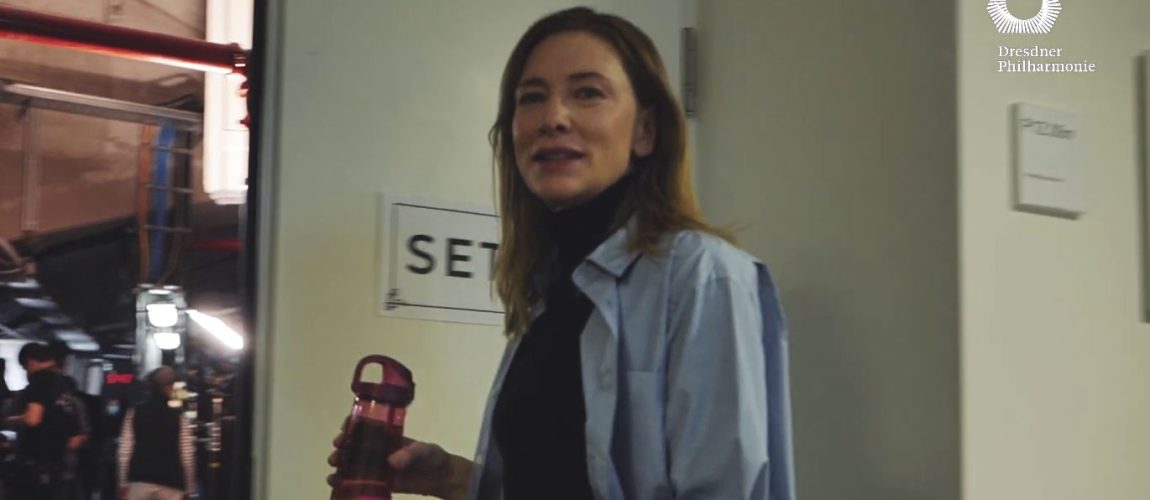


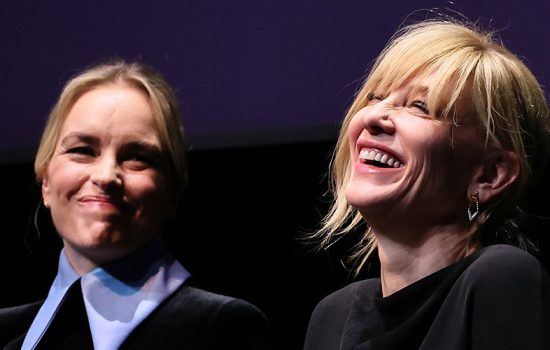

 Black Bag (202?)
Black Bag (202?)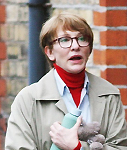 Father Mother Brother Sister (2024)
Father Mother Brother Sister (2024)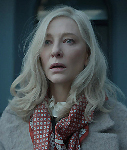 Disclaimer (2024)
Disclaimer (2024)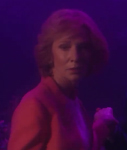 Rumours (2024)
Rumours (2024)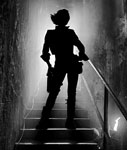 Borderlands (2024)
Borderlands (2024) The New Boy (2023)
The New Boy (2023) TÁR (2022)
TÁR (2022)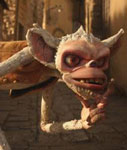 Guillermo Del Toro’s Pinocchio (2022)
Guillermo Del Toro’s Pinocchio (2022)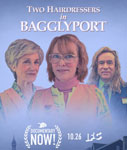 Documentary Now!: Two Hairdressers in Bagglyport (2022)
Documentary Now!: Two Hairdressers in Bagglyport (2022)












